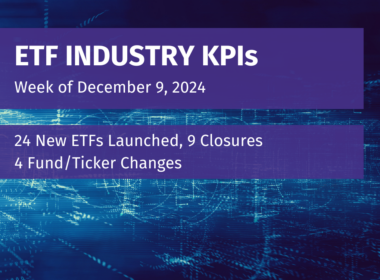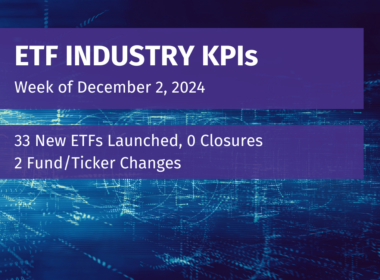This content is shared by Sergio Silva, Web3 Development at Fireblocks
The current state of NFTs feels like the era right between the times of the Walkman and the Discman, somewhere around the early 1980s. For those of you who remember, as innovative as it was back then to be able to carry your music with you, the experience was quite clunky and expensive compared to our current days of unlimited streaming on our mobile phones. Buying, carrying, and even rewinding cassettes were only party of the battle. Artist discoverability depended on radio stations and bootleg recordings were rampant across many markets. One could buy blank tapes and “right-click-save” music straight off the radio! These potential headwinds, however, were not enough to stop the portable music revolution and forever change the composition of modern culture.
I doubt many adults in the 1970s would’ve foreseen how ubiquitous listening to music privately and on-the-go would eventually become, yet today it is such a part of everyday life that we hardly ever think about it. One can draw many parallels between the early Walkman days and the early NFT days and I think we’ll continue to see those parallel as we move into the Discman days, the iPod days, and the iPhone/Spotify days of digital assets. At the token level, current NFTs are similar to cassettes. And while the latter eventually lost market share to CDs, this was not a sign of the death of music, rather the result of technological innovation. The transition from tapes to CDs didn’t change the nature of the content (music) too much, on the contrary, it certainly aided with improving the portable listening experience. In a similar manner, I expect the cyclical evolution of the NFT space to eventually lead towards higher penetration of tokenized digital assets, even if NFTs as we know them today falter.
As you can see in the charts below, cassettes and eventually CDs both gained and lost marketshare as the devices available to consume music evolved while overall music sales continued to increase all through these stages and into the introduction of the iPod.

My dear friend Keith Grossman, President of TIME, who masterfully turned this legacy brand into one of the main pillars of the web3 community constantly reminds us that NFTs are still awaiting their “Steve Jobs and the iPod moment”. The iPod obviously revolutionized portable music by making it incredibly easy to carry “1,000 songs in your pocket”, and just like the Walkman forever changed the way music and culture are consumed. I love Keith’s take and want to credit him for subconsciously inspiring this post. Additionally, I think every established company and brand coming into the web3 space should closely study what Keith was able to achieve for TIME, not only making the brand relevant again for younger generations but also driving $10mm of revenue for the company. Thus, if Keith says we are waiting for our iPod moment, it will pay to listen (pun totally intended).
So, what would an iPod moment look like in tokenized digital assets?
First let me start by saying that I believe in the power and value of a decentralized future. Censorship resistance, self-sovereignty, and the ability to own the networks over which we transact are goals worth fighting for. Having said that, onboarding the next 100mm people to decentralized systems will require a lot of initial centralization and custodial systems. It is still very hard for a non-technical person to interact with the different public blockchains and thus we’ll need to rely on “easy button” onboarding solutions first.
By that same token, legacy companies and brands looking to enter the web3 space have a very unique opportunity to serve as those trusted on-ramps and help bring their non-crypto native customers into this new world. For large companies with major IP portfolios, the opportunity to monetize those via digital assets are tremendous and acting as trusted counterparts for their customers could also be highly profitable for them. NFTs are, after all, supercharged products which can be used to drive customer engagement and loyalty, among other things. However, the current Walkman stage of NFTs has seen brands mostly sell tokens with some sort of branding on them to NFT-native customers who are mostly looking to flip for profit (let’s be honest with each other here) on secondary marketplaces. Once the NFT has been minted during the primary sale, companies lose the ability to own their customers’ ownership experience and many of those tokens end up drifting on their way to zero, potentially causing negative branding effects.
I think the iPod moment for web3 will come once big brands realize that there is a lot more upside for them by owning their customers’ full NFT experience and provide platforms through which clients can remain fully engaged with their brands. Companies which build platforms that can tap not only into the 200k people currently using NFTs, but the millions that do not feel comfortable with managing their own wallets or those who do not even own crypto yet. The emergence of the current era of NFTs came about due to Top Shot and NiftyGateway, both of which onboarded hundreds of thousands of new participants by providing skeuomorphic experiences (you listen to enough Chris Dixon podcasts and eventually start speaking Harry Potter) similar to traditional web2 sign-ups and checkouts. Our iPod moment will come when Coca-Cola’s NFTs are lingering not on Polygon Opensea but thriving on a dedicated Coke platform, thus allowing the company to monitor all kinds of metrics while also craft interesting dynamics to drive customer engagement (and spend).
But Sergio, what you describe is a database, you don’t need a blockchain for that.
Building these experiences on public blockchains doesn’t mean that every action has to be on-chain, as long as we keep the optionality for that to happen. Again, full decentralization is the very long-term goal, but for now there are immediate compromises we can make as we on-ramp the masses. At the end of the day though, if clients have the ability to withdraw their tokens from the centralized platforms, folks who choose to self-custody and explore other protocols might still do so, and that is why we need to build on public blockchains. If you think about it, this is the current state of crypto exchanges, and it has worked well for onboarding new users as well as giving enough flexibility and autonomy to those who are experienced enough to withdraw their assets to their personal wallets. Keeping that flexibility will help us future-proof the different offerings.
As for the legacy brands and companies, there are many more benefits to providing walled garden platforms beyond easy client onboarding and fully owning the experiences.
Royalties: current blockchain standards do not allow for royalties to be enforced at the smart contract level, thus NFT creators are at the mercy of secondary marketplaces to honor, collect, and distribute those monies back to them. Centralization removes this dependence on third-parties.
KYC compliance: Centralization allows companies to better perform KYC on their clients both while onboarding and for any reward distribution. We still mostly live in jurisdictions where rules and regulations apply to big corporations and thus this is an important aspect to consider.
—
Taking a look at the bigger picture, the goal is to make tokenized digital asset ownership as ubiquitous as it is listening to any music on your headphones whenever and wherever you want. We’ll have to go through the motions towards mass adoption and work together to bridge the many gaps that exist today. Just as music labels went from fighting MP3s towards embracing them and participating in the ecosystem that led to our current streaming world, legacy brands can fully embrace digital assets and provide immersive NFT platforms which will allow them to own their customers’ experience (and the revenue opportunities that come with it) while also onboarding millions of people to the new paradigm of tokenized digital asset ownership. The long-term future is decentralized but the short and medium-term will benefit from having engaging custodial experiences and we can build these to be winning situations for everyone involved. Let’s bring the next 100mm people to web3!
Disclosure
All investments involve risk, including possible loss of principal.
This material is provided for informational purposes only and should not be considered an individualized recommendation or personalized investment advice. The investment strategies mentioned may not be suitable for everyone. Each investor needs to review an investment strategy for his or her own particular situation before making any investment decision.
All expressions of opinion are subject to change without notice in reaction to shifting market conditions. Data contained herein from third party providers is obtained from what are considered reliable sources. However, its accuracy, completeness or reliability cannot be guaranteed.
Examples provided are for illustrative purposes only and not intended to be reflective of results you can expect to achieve.
The value of investments and the income from them can go down as well as up and investors may not get back the amounts originally invested, and can be affected by changes in interest rates, in exchange rates, general market conditions, political, social and economic developments and other variable factors. Investment involves risks including but not limited to, possible delays in payments and loss of income or capital. Neither Toroso nor any of its affiliates guarantees any rate of return or the return of capital invested. This commentary material is available for informational purposes only and nothing herein constitutes an offer to sell or a solicitation of an offer to buy any security and nothing herein should be construed as such. All investment strategies and investments involve risk of loss, including the possible loss of all amounts invested, and nothing herein should be construed as a guarantee of any specific outcome or profit. While we have gathered the information presented herein from sources that we believe to be reliable, we cannot guarantee the accuracy or completeness of the information presented and the information presented should not be relied upon as such. Any opinions expressed herein are our opinions and are current only as of the date of distribution, and are subject to change without notice. We disclaim any obligation to provide revised opinions in the event of changed circumstances.
The information in this material is confidential and proprietary and may not be used other than by the intended user. Neither Toroso or its affiliates or any of their officers or employees of Toroso accepts any liability whatsoever for any loss arising from any use of this material or its contents. This material may not be reproduced, distributed or published without prior written permission from Toroso. Distribution of this material may be restricted in certain jurisdictions. Any persons coming into possession of this material should seek advice for details of and observe such restrictions (if any).












